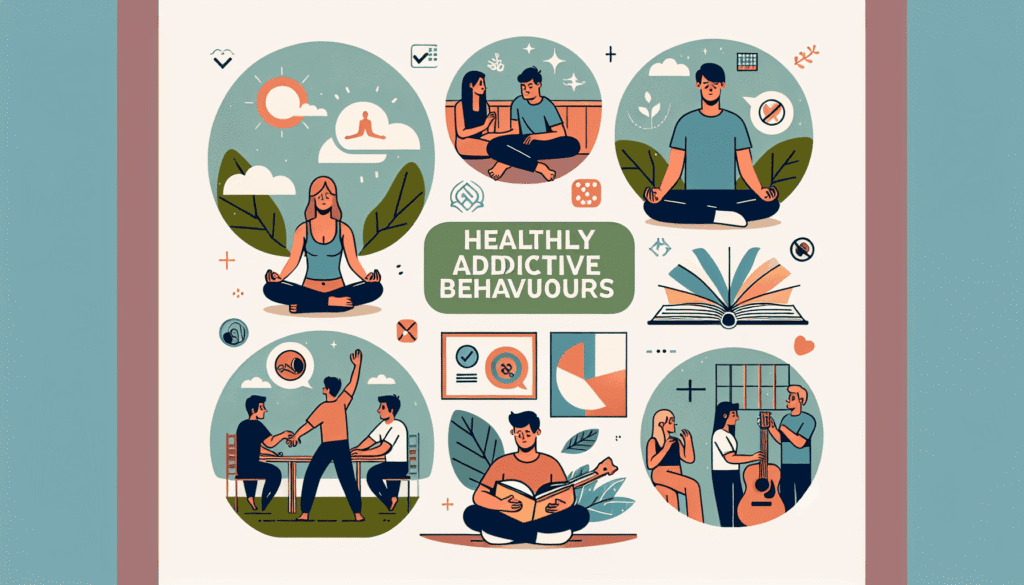Table of Contents
Porn addiction is a growing problem that affects millions of people worldwide, but finding clear and honest answers can be difficult.
Whether you’re struggling with it yourself or trying to support someone who is, understanding the root causes, recognizing the signs, and learning how it impacts relationships are crucial steps toward healing.
In this guide, we answer the most frequently asked questions about porn addiction, providing practical insights and resources to help you take the next step.
If you’re wondering whether you or a loved one may be affected, this article will guide you through everything from what causes porn addiction to how it can be treated and overcome.
What is pornography addiction?
Pornography addiction is more than just a habit—it’s a compulsive need that consumes your time, energy, and mind. It’s when viewing porn no longer feels like a choice but a requirement. People trapped in this cycle often prioritize it over responsibilities, relationships, and faith.
The brain craves more, much like a drug. It alters how you think, feel, and live. You lose control. What once seemed harmless becomes a destructive force, affecting your mind, heart, and soul.
If you wonder whether you’re addicted, we offer a simple test to help you understand where you stand: The porn Addiction Test.
For more detailed insight, you can explore the article What Is Porn Addiction? to grasp the full scope of how this addiction takes hold.
Is porn addiction real?
Yes, porn addiction is real, and it impacts millions of people worldwide. Just like addictions to substances such as drugs or alcohol, porn addiction alters the brain’s reward system. The constant search for pleasure creates a cycle of craving, leading to compulsive viewing. Over time, it can damage relationships, mental health, and even spiritual well-being.
While some may dismiss it as just a “bad habit,” countless studies and personal stories show that for many, it’s a struggle they can’t control on their own. If you’re questioning whether porn addiction is real, the experiences of those who’ve overcome it tell a powerful story.
To learn more about how this addiction works and affects the brain, explore The Neuroscience of Porn Addiction.
Why is pornography addictive?
Pornography hijacks the brain’s reward system, much like drugs or alcohol. Every time you watch, the brain releases dopamine—a chemical that makes you feel pleasure. Over time, your brain craves that rush more often, building a tolerance. What once satisfied you no longer do, leading to longer, more intense viewing sessions.
This cycle of seeking more for the same high is what makes pornography so addictive. It constantly changes how your brain works, rewiring it to seek out the following fix. It’s not just about willpower—it’s about brain chemistry.
For a deeper dive into how pornography affects the brain, you can read The Neuroscience of Porn Addiction.
Am I addicted to porn?
It’s not always easy to recognize when a habit becomes an addiction. Ask yourself this: do you feel a sense of loss or emptiness when you try to stop? Do you think about it constantly, even when you’re not watching? Addiction often sneaks up gradually, making it hard to pinpoint when things crossed the line.
An important indicator is how you feel when you’re not watching—irritable, restless, or anxious. If porn use is controlling your thoughts or behaviors, it may be more than just a habit.
If you’re unsure, take our Porn Addiction Test for a clearer picture of where you stand.
What are the signs of porn addiction?
Porn addiction often hides in plain sight, but the signs are there if you look closely. It starts with a subtle shift—watching more often than you intended. Over time, you may lie about your usage or isolate yourself to indulge. The urge to watch becomes overwhelming, even when you know it’s harming your life.
You might feel guilty afterward, but the cycle repeats. Relationships suffer. Time with family, work, or even prayer takes a back seat. You feel trapped, unable to stop even as the consequences pile up.
For a deeper look at the signs, check out Signs of Porn Addiction, where we outline the behavioral, emotional, and spiritual indicators.
What causes porn addiction?
Porn addiction doesn’t happen overnight. It’s often rooted in deeper emotional, psychological, or social factors. Loneliness, stress, or unresolved trauma can lead people to use porn as an escape. Over time, this coping mechanism can become a crutch, creating dependency.
Another major cause is accessibility. With the internet, pornography is just a click away. This constant availability makes it easy to turn to, especially during boredom or stress. Add to that the brain’s natural craving for pleasure, and it becomes a cycle that’s hard to break.
For more insight into why addiction develops, check out Causes of Porn Addiction, where we dive deeper into the emotional, psychological, and biological factors.
How does porn addiction affect relationships?
Porn addiction can severely strain relationships, often leading to broken trust and emotional distance. When one partner becomes consumed by pornography, it can feel like a betrayal to the other. Intimacy suffers, as the addicted person may withdraw emotionally and physically, seeking satisfaction through porn instead of genuine connection.
Over time, feelings of shame, guilt, and secrecy build up, creating a wall between partners. Arguments and feelings of inadequacy often arise, leaving the non-addicted partner feeling neglected or unvalued. In some cases, it can lead to the breakdown of the relationship entirely.
Healing requires open communication, rebuilding trust, and often professional help to address both the addiction and its effects on the relationship. Accountability tools like Covenant Eyes can assist in fostering honesty and transparency as part of the recovery process.
How many people are addicted to porn?
Porn addiction is more common than many realize. Studies show that millions of people worldwide struggle with it. The ease of access to pornography in today’s digital age has contributed to a rise in addiction across all demographics—young, old, married, and single. Estimates vary, but research suggests that up to 6% of the adult population could be experiencing symptoms of porn addiction.
This issue is widespread but often goes unnoticed or unspoken, leaving many to battle silently. Understanding the scale of the problem can help reduce the stigma and open doors for more people to seek help.
For real stories and personal experiences, you can read Porn Addiction Stories.
How to help someone with a porn addiction?
Helping someone with a porn addiction starts with empathy and understanding. They may feel ashamed or trapped, so the first step is to create a safe space to talk openly without fear of judgment. Let them know you’re there to support them, not condemn them.
Encourage them to seek professional help or join a support group. Recovery is often more successful when shared with others. Suggest accountability tools like Covenant Eyes, which can help them regain control. But change won’t happen overnight—it requires patience, persistence, and prayer.
For more practical tips, explore Treatment for Porn Addiction.
How to avoid porn addiction?
Avoiding porn addiction starts with setting boundaries and being mindful of your habits. Recognize triggers that lead you to view pornography—boredom, stress, or loneliness—and find healthier ways to cope, like prayer, physical exercise, or connecting with loved ones.
Limiting your exposure to situations that might lead to temptation is critical. This could mean using accountability software like Covenant Eyes to keep yourself in check. It’s easier to prevent addiction when you’re aware of your patterns and take steps to safeguard your mind and spirit.
Building solid relationships and filling your life with meaningful activities can help you steer clear of the trap of pornography.
How is porn addiction treated?
Treating porn addiction requires a multi-faceted approach. It often begins with acknowledging the problem and seeking help. Professional therapy is one of the most effective treatments, offering a safe space to explore the emotional and psychological roots of addiction. Cognitive Behavioral Therapy (CBT) is commonly used to help rewire harmful thought patterns and behaviors.
Support groups also play a vital role. Sharing struggles and victories with others who understand can create a sense of community and accountability. Some people find help through faith-based recovery programs, which blend spiritual guidance with practical steps toward healing.
In addition, tools like Covenant Eyes can offer accountability by monitoring online activity, helping users stay mindful of their habits.
For a deeper dive into treatment options, visit Treatment for Porn Addiction.
Can porn addiction be cured?
Yes, porn addiction can be overcome, but it’s essential to understand that recovery is often a long-term process rather than a quick fix. With the right combination of therapy, accountability, and support, many people can break free from the grip of addiction. However, it’s essential to remain vigilant, as temptation can resurface, especially in stress or loneliness.
True recovery doesn’t just mean quitting porn—it involves healing the mind and spirit, developing healthier habits, and finding joy and fulfillment in other areas of life. Tools like Covenant Eyes can assist in maintaining accountability along the way, but lasting change comes from within, supported by ongoing effort and prayer.
For success stories and further insights, visit Porn Addiction Stories.
Where can I find resources and support for porn addiction?
There are many resources available to help those struggling with porn addiction. Support groups like Sexaholics Anonymous or Celebrate Recovery provide a community of people who understand the challenges and offer accountability. You can also find licensed therapists specializing in treating addiction through in-person or online counseling.
Faith-based organizations often offer guidance that combines spiritual healing with practical steps toward recovery. Additionally, tools like Covenant Eyes can help maintain accountability online.
For Christian-based support, check out Christian Porn Addiction, where we explore faith-driven recovery options.
Conclusion
Porn addiction can deeply affect various aspects of life, from personal well-being to relationships. Addressing the issue requires understanding the root causes, recognizing the signs, and taking concrete steps toward recovery. With the right support and guidance, it is possible to regain control and heal.
For more in-depth information and practical advice, visit our complete guide: Breaking the Chains of Porn Addiction.





![Your Brain on Porn [Book Review]](https://christpulse.com/wp-content/uploads/2024/09/611TBbtqJYL._SL1360_-663x1024.jpg)




